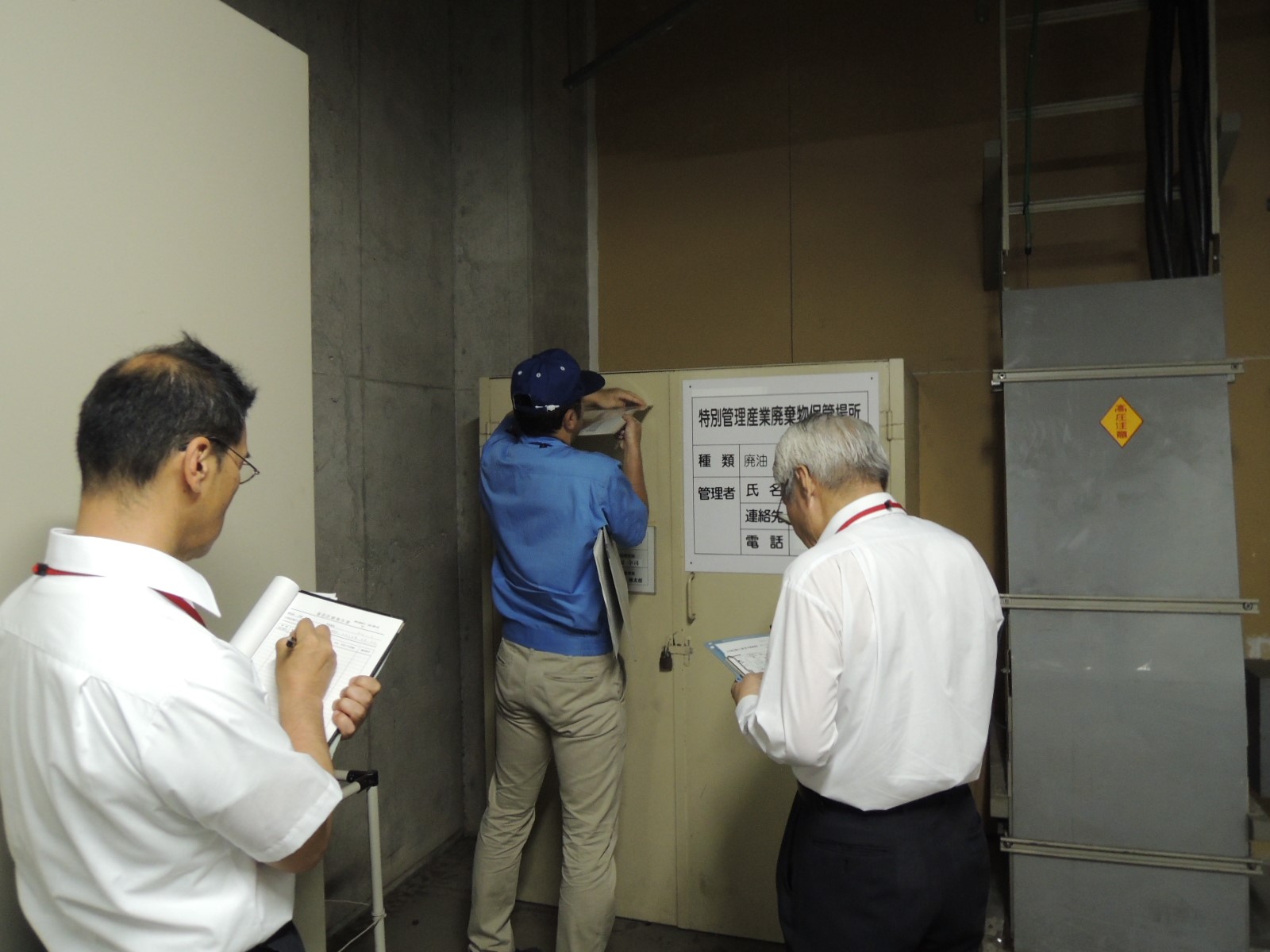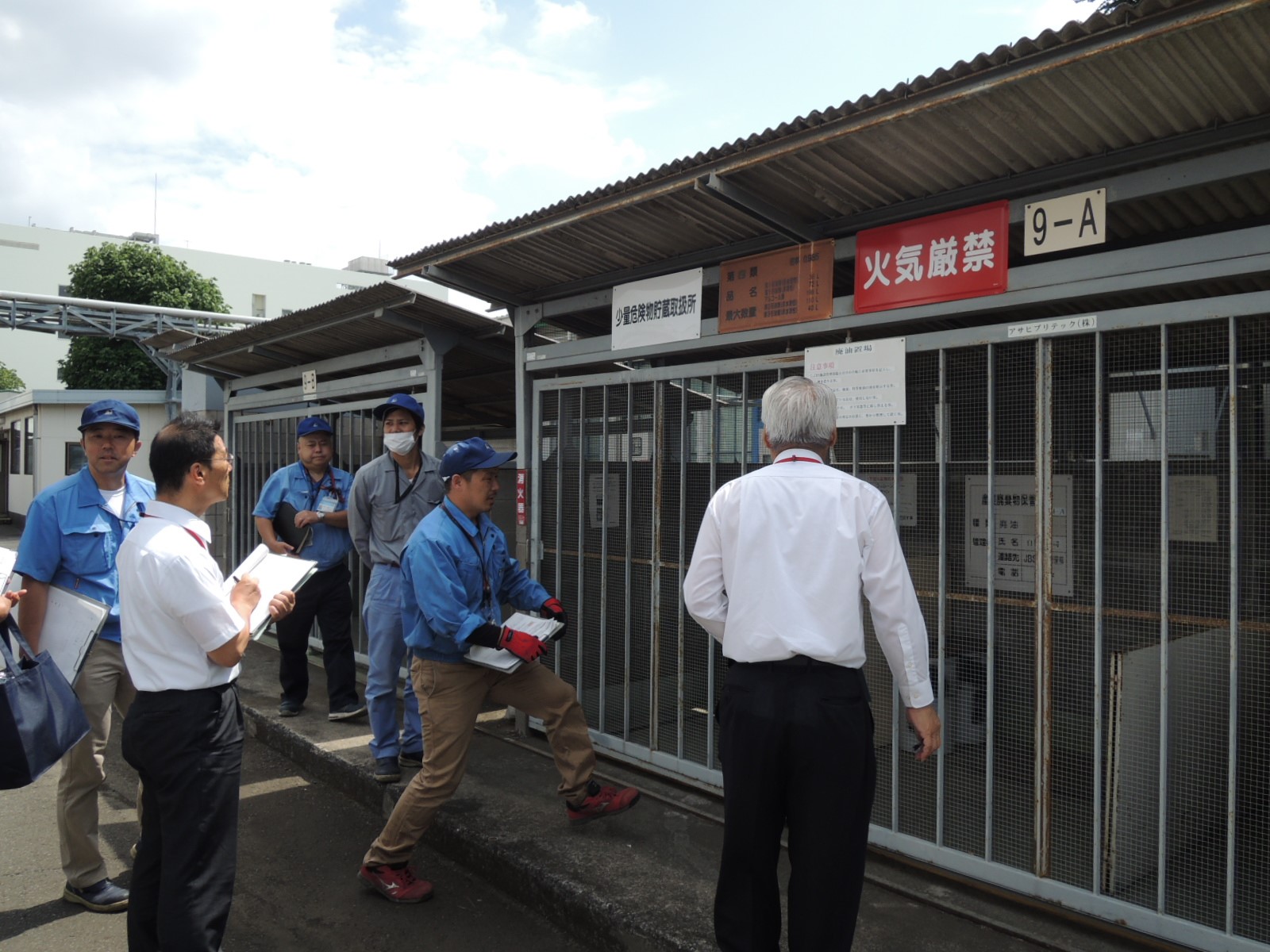Environmental Report 2020
Environmental Audits
The periodic environmental internal audit is performed to check that the JAE Group’s environmental management system complies with the audit criteria, and that it is effectively implemented and maintained for all sites and organizations.
Compliance with ISO14001 and effectiveness are also audited by an external auditing organization.
The internal environmental quality audit is a periodic audit of the proper management of chemical substances contained in products within the JAE Group.
Results of Periodic Environmental Internal Audit
The fiscal 2019 periodic environmental internal audit, which all sites and management bodies are subject to, was conducted on the state of compliance to requirements in ISO 14001:2015, the evaluation criteria for environmental performance, and the verification of processes that lead to improvement as priority items.The result of this audit detected points for improvement at some sites, but confirmed that the Group has effectively conducted and maintained the audit and complied with audit standards.
Issues and points to evaluate that are common to the entire Group are shared horizontally, further raising the management level.
| Sites | Points to evaluate | Citations | ||
|---|---|---|---|---|
| Non-compliant | Borderline | Requests | ||
| JAE Group and all sites | 6 instances | 0 instances | 19 instances | 40 instances |
Results of the ISO14001 Audit
In fiscal 2018, the environmental management systems multiple domestic sites received a renewal audit for ISO14001:2015, which confirmed that the registered management system is being maintained.
| Subject of audit | |||
|---|---|---|---|
| Good points | Items for improvement | Opportunities for improvement | |
| JAE Group JAE, HAE, YAE sites |
3 instances | None | 21 instances |


Fiscal 2019 ISO14001 periodic audit
Results of internal environmental quality audits
Since fiscal 2015, sites in Japan have introduced the JAMP(*use cursor to view definitions)-published Guidelines for the Management of Chemical Substances in Products check sheet and conducted audits with a mutual assessment system performed by internal environmental advisors.Just as in fiscal 2018, fiscal 2019 audits were conducted using a mutual assessment system at five sites in Japan and seven sites overseas with an emphasis on the management and operation matters in the revised European RoHS Directive (phthalates), which took effect in July 2019.
The audits confirmed that “semi-conformance” in fiscal 2018 improved and good operation has been maintained.
| Site | Citations FY2018 ⇒ FY2019 | |
|---|---|---|
| Non-compliant*1 | Partially compliant*2 | |
| JAE sites (Connectors, Aerospace, UIS) HAE, YAE, FAE, and SAE sites |
0 instances ⇒ 0 instances |
4 instances ⇒ 0 instances |
| Audits conducted at overseas sites | Citations: Fiscal 2018⇒ FY2019 | |
|---|---|---|
| Non-compliant*1 | Partially compliant*2 | |
| North America 2 bases Asia 5 bases |
0 instances ⇒ 0 instances |
1 instances ⇒ 0 instances |
*1: Deemed “non-compliant” in the event that there is no rule in response to an issue, and/or operations are not conducted.
*2: Deemed “partially compliant” if in practical terms operations are satisfactorily conducted in response to an issue even when rules or a part of an operation do not meet requirements.
Building a sustainable world
Significance of the 2020 Environmental Report
Symbol of the Group's Environmental Policies
Scope of Reporting and Editorial Policy
Policies and results of environmental activities
Environmental Management
- Implementation Status of the Environmental Management System
- Environmental Audits
- Environmental Education
- Environmental Risk Management
- Environmental Accounting
Engaging with Society
- Involvement with biodiversity
- Supply Chain Management
- Eco-friendly Products
- Social contribution activities
- Environmental Activity History
Initiatives to reduce environmental impact